Hairy Frogs
- April 1, 2024
- 0 comment
Hairy frogs, also known as “horrificus” or “wolverine frogs,” are a fascinating species of amphibians found primarily in the rainforests and wooded areas of Central Africa. These unique creatures boast a robust body with relatively short limbs, adorned with small hair-like structures known as dermal papillae, giving them their distinctive appearance. Despite their name, these frogs don’t actually have hair; instead, these papillae are composed of collagen fibers and keratin. Hairy frogs are renowned for their remarkable defense mechanism called autotomy, where they can break the bones in their toes and force them through the skin to create sharp claws, serving as a deterrent against predators.

They exhibit cryptic coloration and texture, enabling effective camouflage amidst their lush surroundings. Hairy frogs play a significant role in their ecosystem, serving as both predators and prey. However, they face threats due to habitat loss, pollution, and overexploitation, leading to declines in their populations. Conservation efforts are essential to safeguard the survival of these intriguing amphibians and preserve their cultural significance and ecological role for future generations.
| Specification | Description |
|---|---|
| Scientific Name | Trichobatrachus robustus |
| Common Names | Hairy frog, wolverine frog, horrificus frog |
| Habitat | Rainforests, wooded areas of Central Africa |
| Distribution | Cameroon, Equatorial Guinea, Nigeria |
| Body Characteristics | Robust body, short limbs, cryptic coloration |
| Unique Feature | Presence of hair-like structures (dermal papillae) covering body |
| Defense Mechanism | Autotomy: Ability to break bones in toes and force them through skin to create sharp claws |
| Diet | Carnivorous; feeds on insects, worms, spiders |
| Reproduction | Breeds in water; females lay eggs, tadpoles undergo metamorphosis into juvenile frogs |
| Conservation Status | Some species vulnerable or endangered due to habitat loss, pollution, overexploitation |
| Significance | Cultural significance in certain African cultures; subject of scientific research |
Hairy Frogs
Hairy frogs, also known as “horrificus” or “wolverine frogs,” are an intriguing species of amphibians found in certain regions of Central Africa. These frogs belong to the genus Trichobatrachus within the family Arthroleptidae. Their distinctive appearance and fascinating characteristics make them a subject of interest for researchers and enthusiasts alike.
Physical Characteristics
Appearance
Hairy frogs possess a distinct physical appearance characterized by a robust body and relatively short limbs. They exhibit various colorations, ranging from shades of brown to green, allowing them to blend seamlessly into their natural surroundings. One of the most notable features of hairy frogs is the presence of hair-like structures covering their bodies. These structures, known as dermal papillae, resemble small strands of hair and are composed of collagen fibers and keratin. While similar structures are found in other amphibian species, they are particularly pronounced in hairy frogs, adding to their unique appearance.

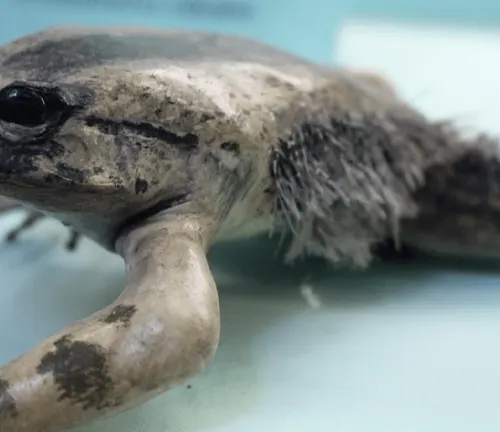
Unique Feature: Hair-Like Structures
The hair-like structures on hairy frogs serve multiple purposes. Firstly, they provide additional surface area, which may aid in respiration and gas exchange through the skin, especially in aquatic environments. Secondly, these structures contribute to camouflage, helping the frogs blend into their surroundings and avoid detection by predators. Additionally, the dermal papillae may also play a role in sensory perception, allowing hairy frogs to detect changes in their environment and locate prey more effectively. Overall, the presence of hair-like structures is a defining characteristic of hairy frogs and contributes to their fascinating biology.
Habitat and Distribution

Hairy frogs are predominantly found in the lush rainforests and wooded areas of Central Africa. Their habitat spans across countries such as Cameroon, Equatorial Guinea, and Nigeria. Within these regions, hairy frogs inhabit environments near streams, rivers, marshes, and other bodies of water. They thrive in moist conditions rich in vegetation, where they can camouflage effectively and find ample food sources. Despite their specific habitat requirements, hairy frogs may also adapt to human-altered landscapes to some extent, although habitat destruction remains a significant threat to their populations.
Behavior and Lifestyle
Reproduction
Hairy frogs follow a typical amphibian reproductive strategy. During the breeding season, which often coincides with the rainy season in their native habitat, male frogs attract females through vocalizations and mating behaviors. Once a female selects a mate, the male grasps onto her back in a behavior known as amplexus. Fertilization occurs externally, with the female laying eggs in water, typically in shallow pools or slow-moving streams. The male then releases sperm to fertilize the eggs. The eggs hatch into tadpoles, which undergo metamorphosis over time, eventually transforming into juvenile frogs. Hairy frogs exhibit parental care to varying degrees, with some species providing minimal protection to their offspring, while others may exhibit more elaborate parental behaviors.
Diet and Feeding Habits
Hairy frogs are carnivorous amphibians, feeding primarily on small invertebrates such as insects, worms, spiders, and other arthropods. They employ a sit-and-wait strategy to ambush their prey, using their camouflage to blend into their surroundings before striking with their sticky tongues. Hairy frogs are opportunistic feeders, consuming whatever prey is readily available in their environment. Their diet may vary depending on factors such as seasonality and prey availability. As nocturnal hunters, they are most active during the night, venturing out to forage for food under the cover of darkness. Their feeding habits play a crucial role in regulating insect populations and maintaining ecological balance within their habitats.
Adaptations for Survival
Defensive Mechanisms
Hairy frogs possess several unique defensive mechanisms that help them evade predators and survive in their natural habitat. One of the most fascinating defenses is autotomy, where they have the ability to break the bones in their toes and force them through the skin, effectively transforming their hind feet into sharp claws. This defensive adaptation acts as a deterrent against predators, allowing hairy frogs to inflict injury and escape from potential threats.
Additionally, they may employ rapid movements or vocalizations to startle predators and create opportunities for escape. While autotomy is their primary defense, hairy frogs may also secrete toxins through their skin as a secondary line of defense, making them unpalatable or even toxic to predators.
Camouflage Techniques
Camouflage is a vital survival strategy for hairy frogs, allowing them to blend seamlessly into their surroundings and avoid detection by predators. Their cryptic coloration and textured skin enable them to mimic the patterns and colors of their environment, such as fallen leaves, moss-covered rocks, or muddy stream banks. This effective camouflage helps them remain concealed from predators while they wait patiently for prey or seek refuge from potential threats.
Additionally, the hair-like structures on their bodies further enhance their camouflage, breaking up their outline and making them even more difficult to spot. Hairy frogs may also adjust their body posture to better match their surroundings, further enhancing their camouflage effectiveness. Overall, their camouflage techniques are essential for survival in their habitat, allowing them to evade detection and thrive in their environment.
Conservation Status
The conservation status of hairy frogs varies depending on the specific species and their respective populations. While some species may be relatively stable, others face significant threats and are classified as vulnerable or endangered by conservation organizations.
Habitat loss due to deforestation, agricultural expansion, and urbanization is one of the primary threats to hairy frogs. As their natural habitats diminish, populations become fragmented, making them more susceptible to extinction. Pollution, including water pollution from agricultural runoff and chemical contaminants, further compounds the challenges faced by hairy frogs, affecting water quality and the health of their aquatic habitats.
Overexploitation for the pet trade is another concern, particularly for species with attractive or unusual characteristics. Illegal collection for the pet market can deplete wild populations and disrupt ecosystems, further endangering hairy frog species.
Climate change poses additional risks to hairy frogs, as shifts in temperature and precipitation patterns can alter their habitats and disrupt breeding cycles. Increased frequency and severity of extreme weather events, such as droughts and floods, can also impact hairy frog populations and their ability to survive and reproduce.
Conservation efforts aimed at protecting hairy frogs and their habitats are crucial for their long-term survival. These efforts may include habitat restoration, protected area designation, community education and engagement, and enforcement of laws and regulations to prevent illegal trade and habitat destruction. Collaboration between governments, conservation organizations, researchers, and local communities is essential to ensure the conservation of hairy frogs and the biodiversity of their ecosystems.
Interactions with Humans
Cultural Significance
In certain African cultures, hairy frogs hold cultural significance and are featured in folklore and traditional medicine practices. However, increased habitat destruction and overexploitation have led to declines in their populations.
Research and Study
Hairy frogs serve as subjects for scientific research, particularly in fields like evolutionary biology and biomechanics. Their unique adaptations, such as autotomy, have attracted the interest of researchers seeking to understand the mechanisms behind such behaviors.
Different Species
Trichobatrachus robustus
Commonly known as the hairy frog or wolverine frog, this species is native to Central Africa and is renowned for its distinctive hair-like structures covering its body.

Frequently Asked Questions (FAQs)
- What are hairy frogs and where are they found?
Hairy frogs are a species of amphibians primarily found in the rainforests and wooded areas of Central Africa, including countries like Cameroon, Equatorial Guinea, and Nigeria. - Why are hairy frogs called “hairy” if they don’t have actual hair?
The name “hairy frogs” comes from the hair-like structures, known as dermal papillae, covering their bodies. While these structures resemble hair, they are actually composed of collagen fibers and keratin. - What is the purpose of the hair-like structures on hairy frogs?
The hair-like structures on hairy frogs serve various purposes, including providing camouflage in their natural habitat and possibly aiding in sensory perception. - How do hairy frogs defend themselves against predators?
Hairy frogs have a unique defense mechanism called autotomy, where they can break the bones in their toes and force them through the skin to create sharp claws, deterring predators. - Are hairy frogs endangered?
Some species of hairy frogs are classified as vulnerable or endangered due to habitat loss, pollution, and overexploitation. Conservation efforts are essential to protect their populations. - What do hairy frogs eat?
Hairy frogs are carnivorous and primarily feed on small invertebrates such as insects, worms, and spiders. - How do hairy frogs reproduce?
Hairy frogs breed in water, with females laying eggs that are fertilized externally. The eggs develop into tadpoles, eventually undergoing metamorphosis into juvenile frogs. - Can hairy frogs live outside of water?
While hairy frogs are primarily aquatic, they can venture onto land for short periods. However, they require moist environments to survive. - Do hairy frogs have any cultural significance?
In certain African cultures, hairy frogs hold cultural significance and may be featured in folklore and traditional medicine practices. - What research is being conducted on hairy frogs?
Hairy frogs serve as subjects for scientific research, particularly in fields like evolutionary biology, biomechanics, and conservation. Their unique adaptations make them valuable study subjects. - Do hairy frogs have any natural predators?
Hairy frogs may face predation from various animals in their ecosystem, including snakes, birds, and larger amphibians.


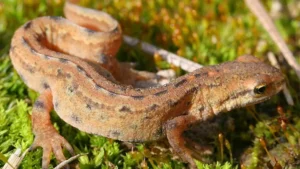
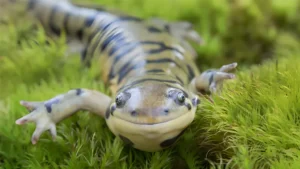

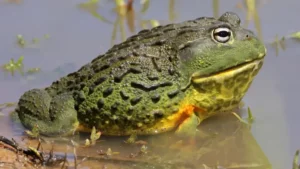

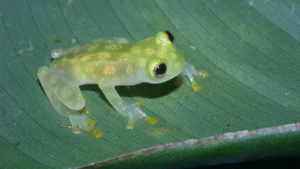
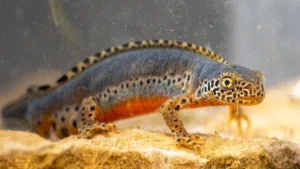


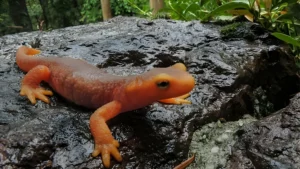
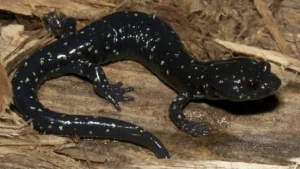
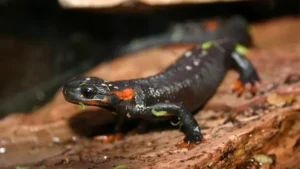
Leave your comment